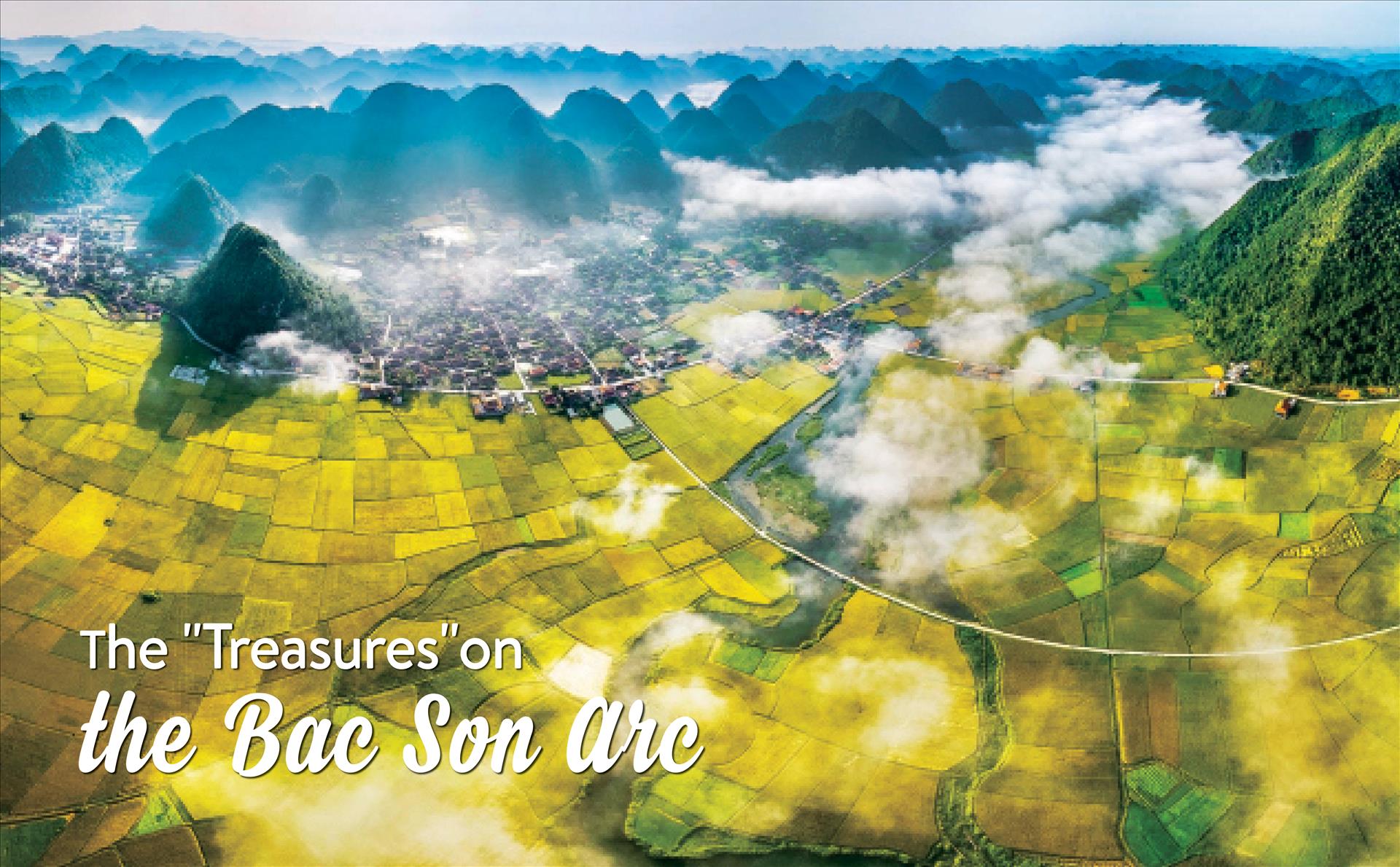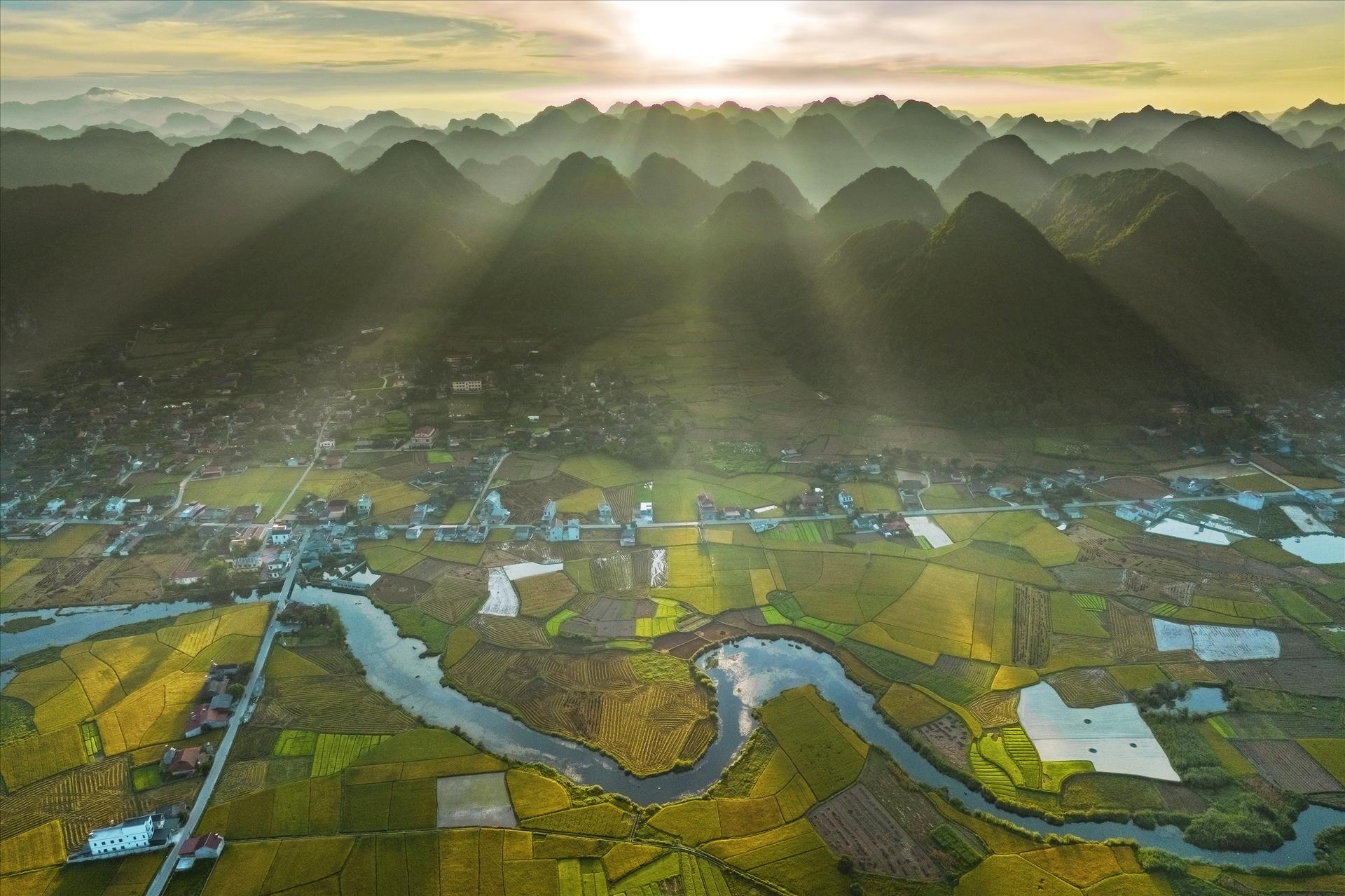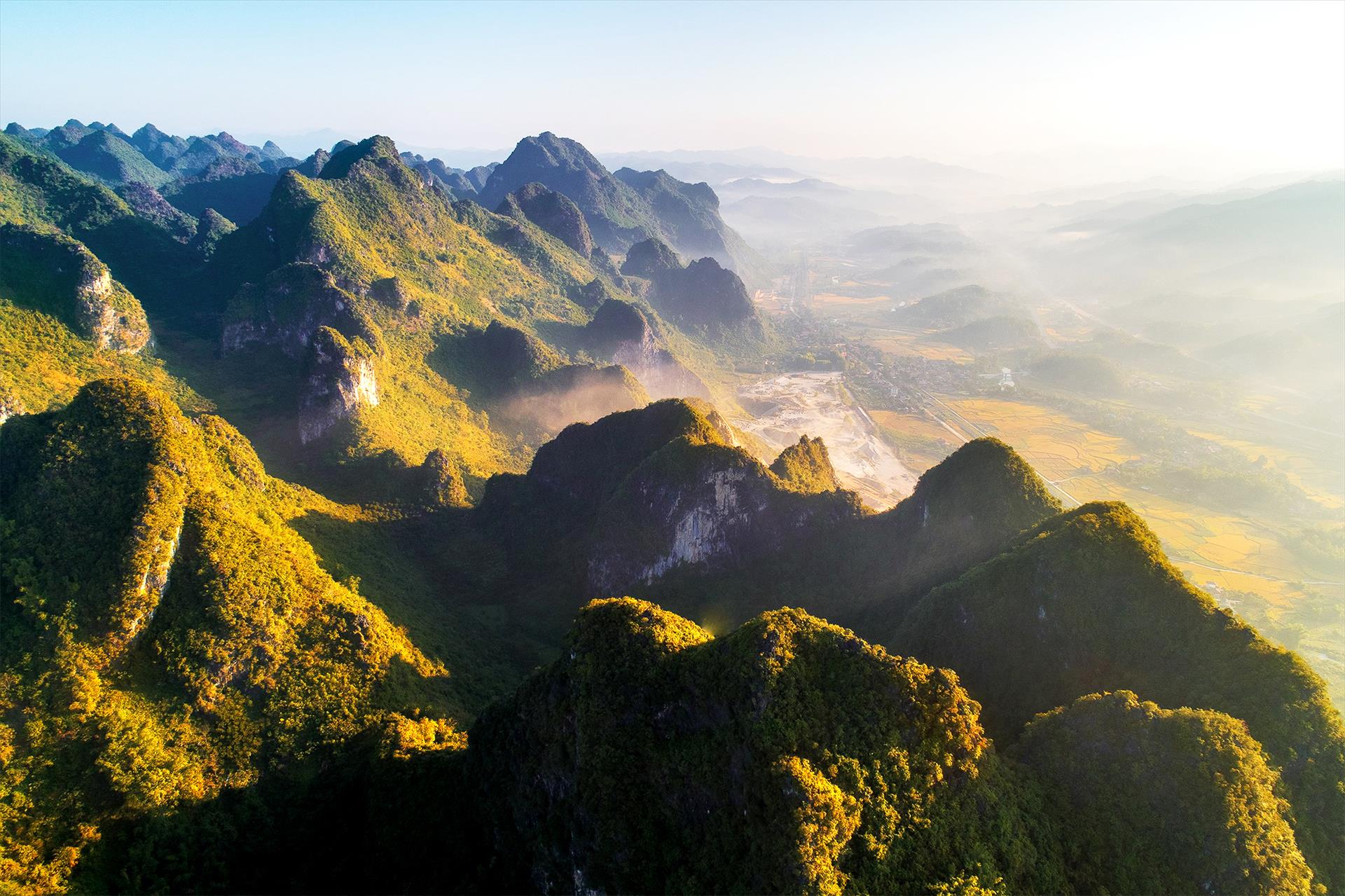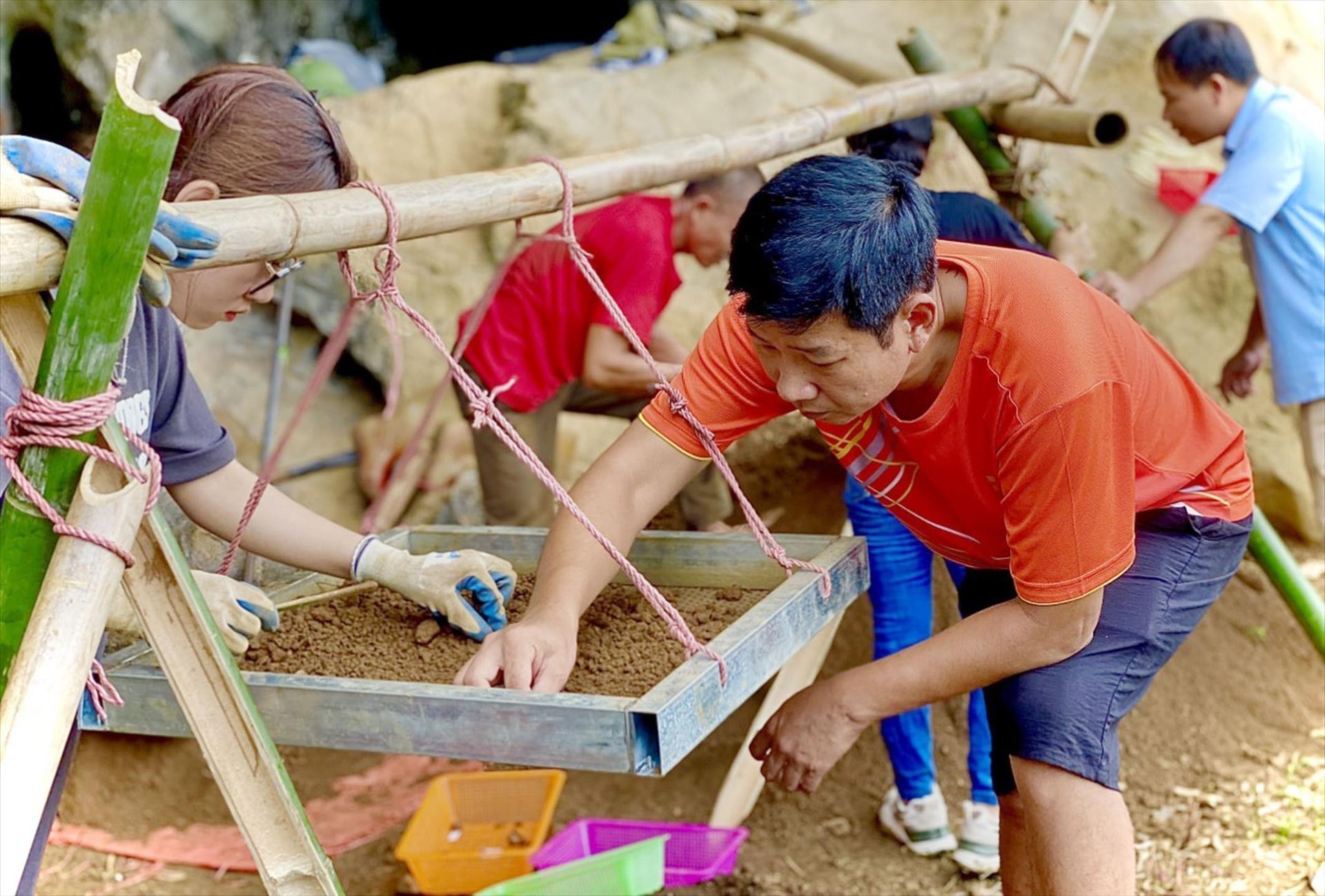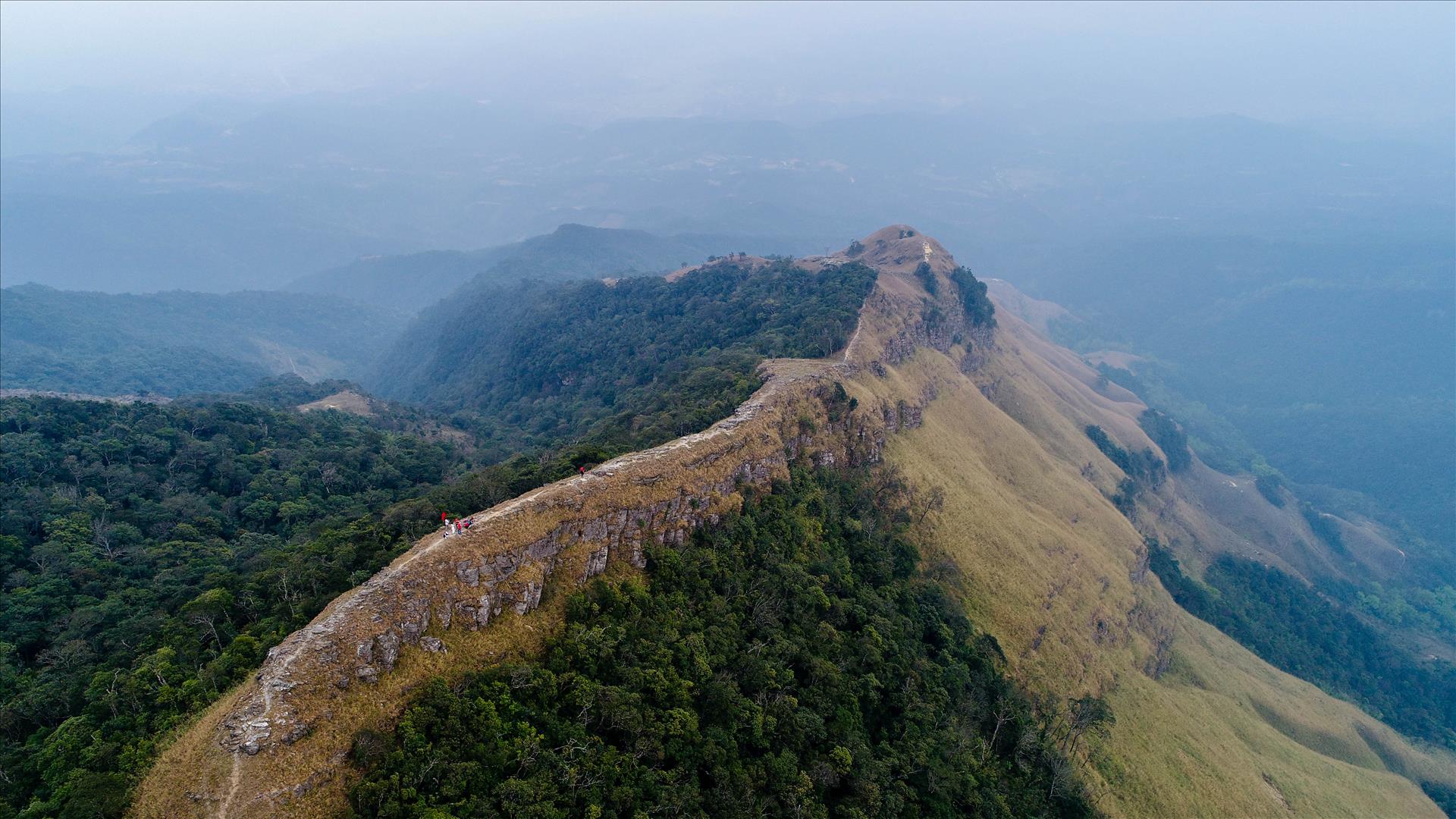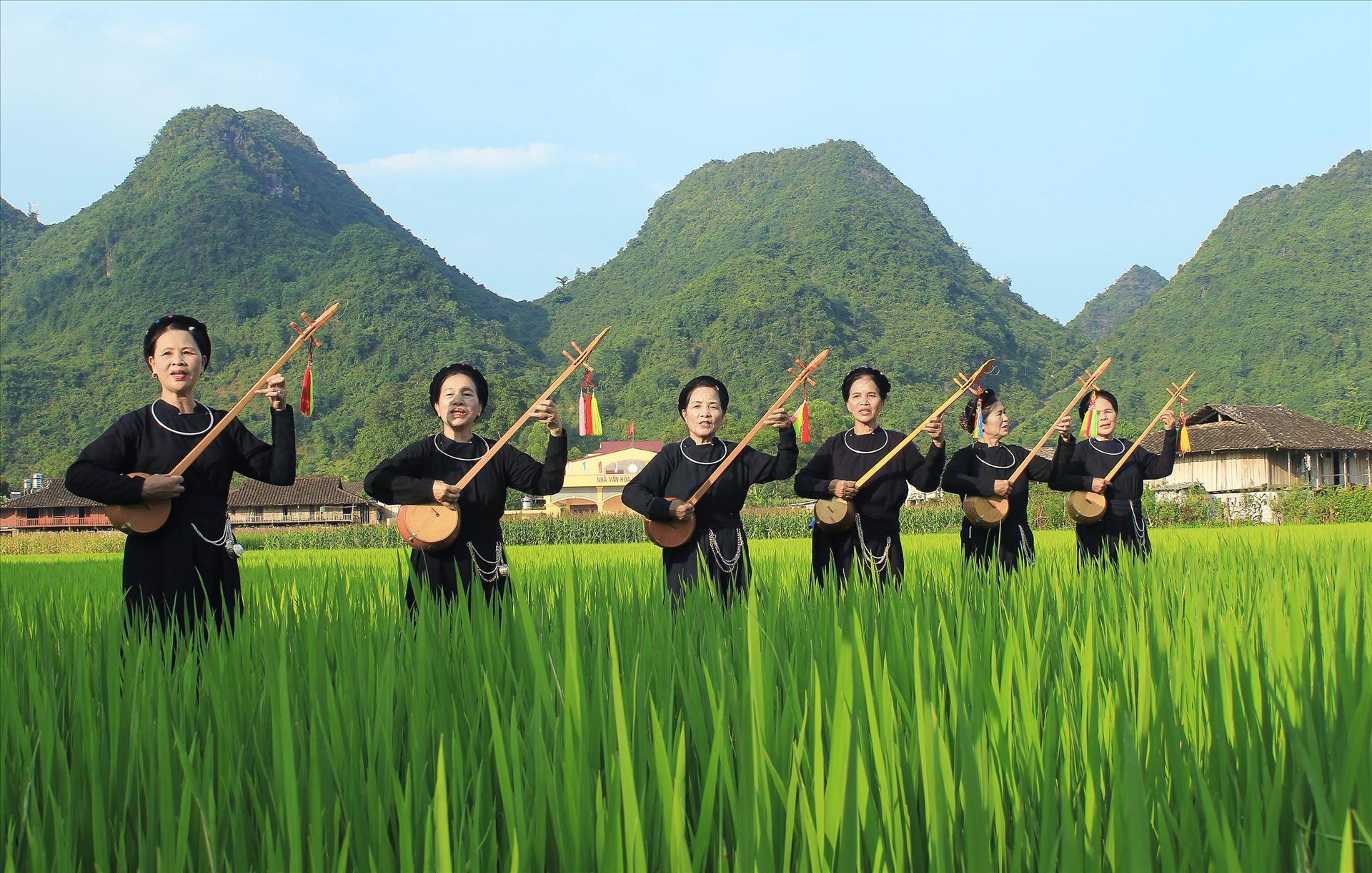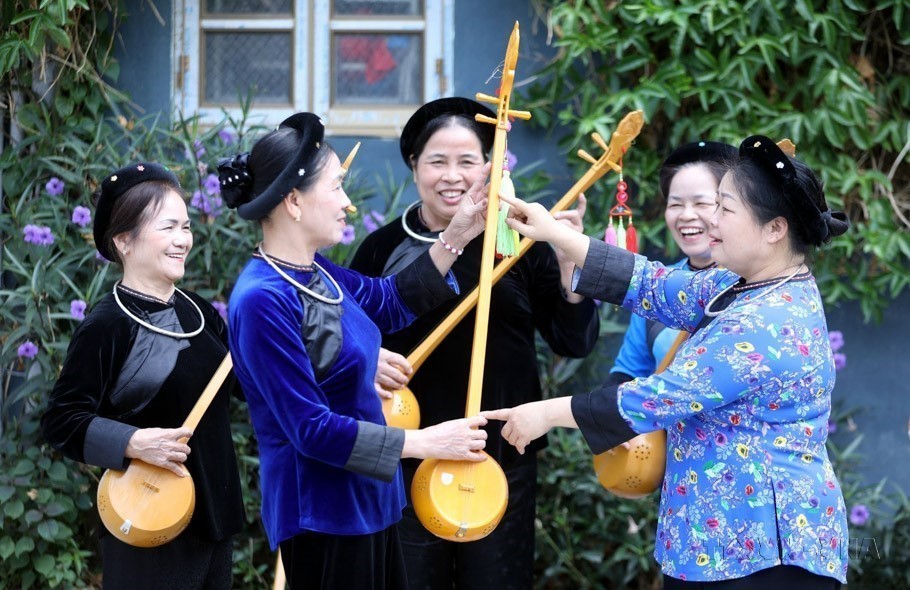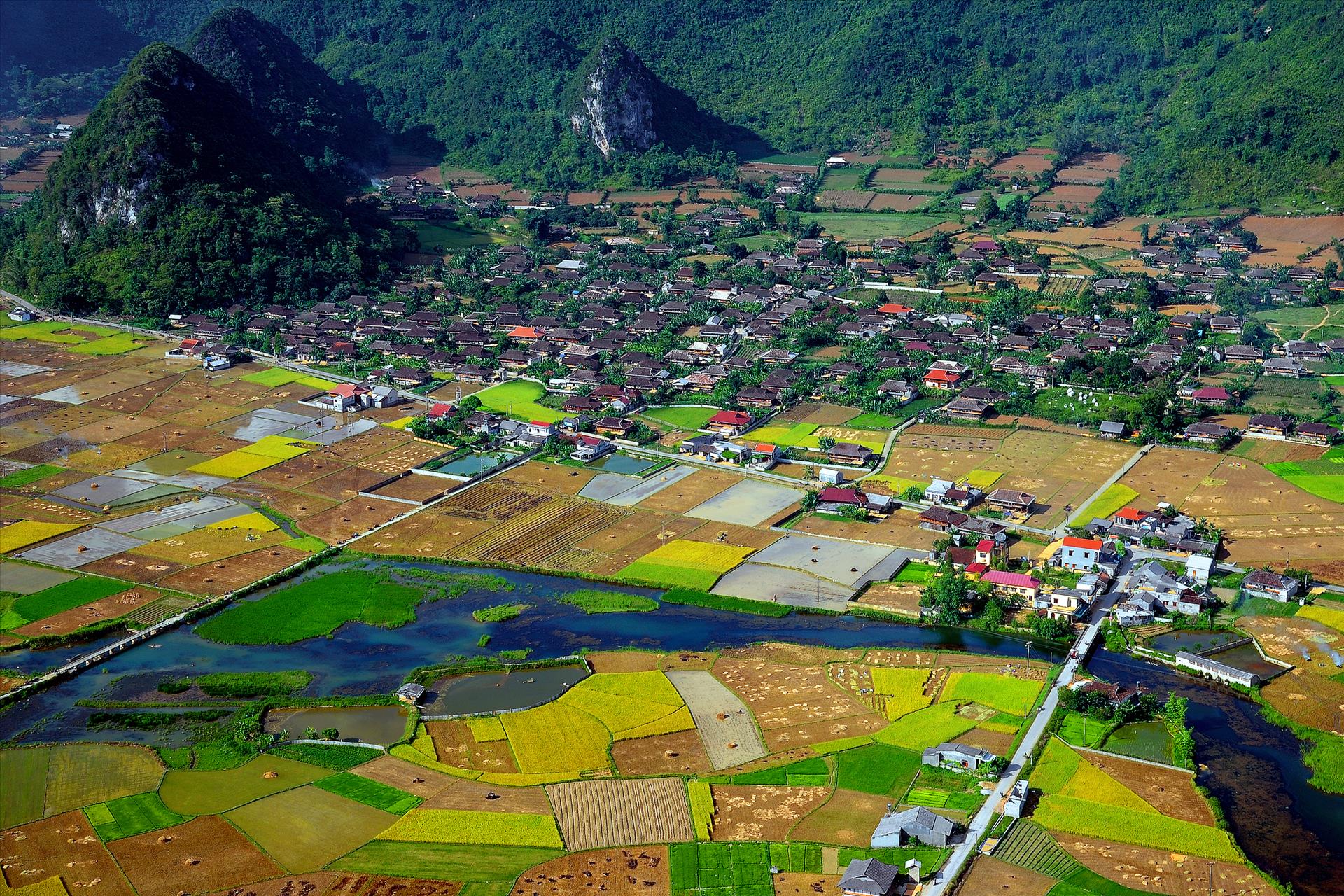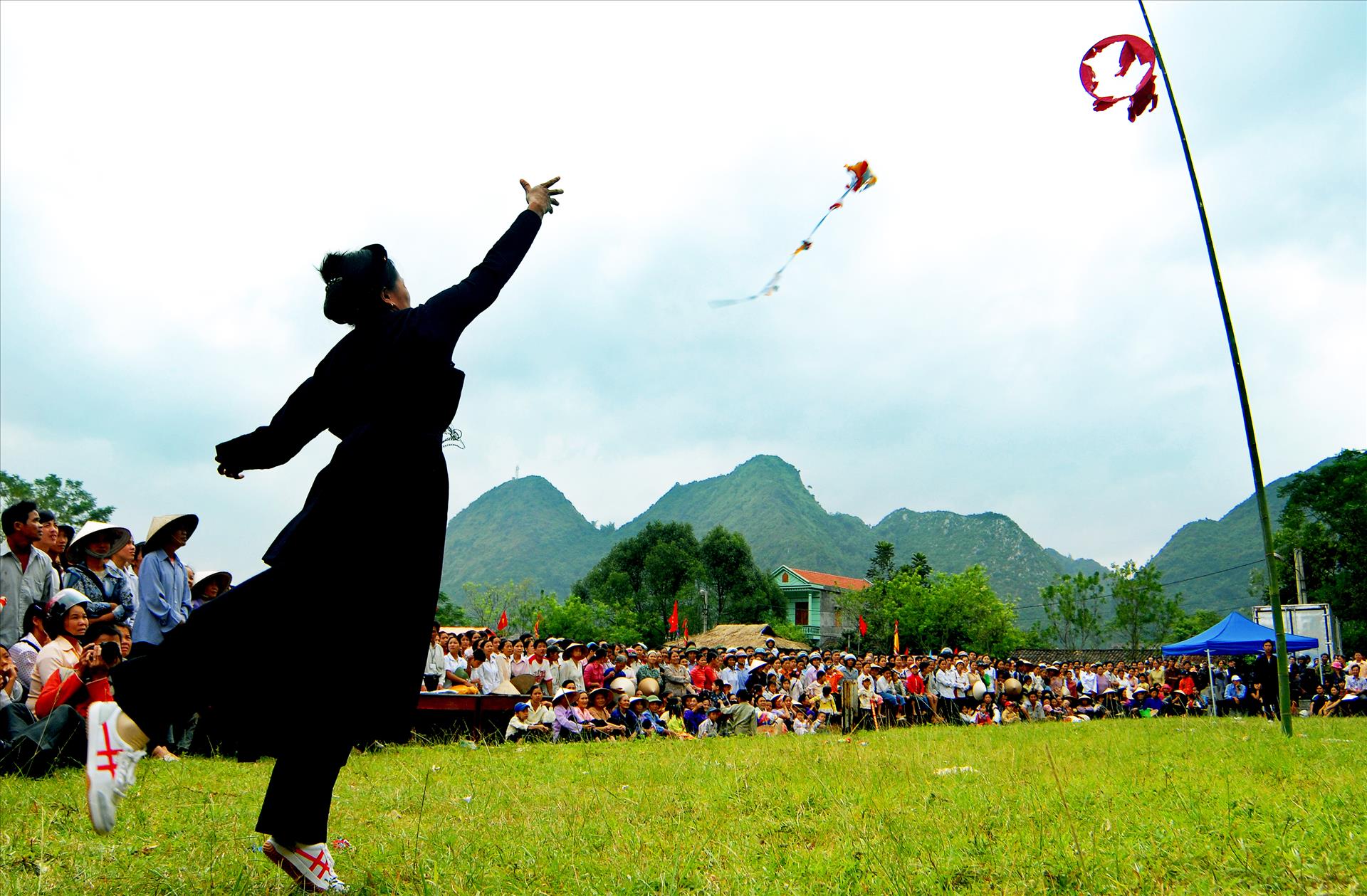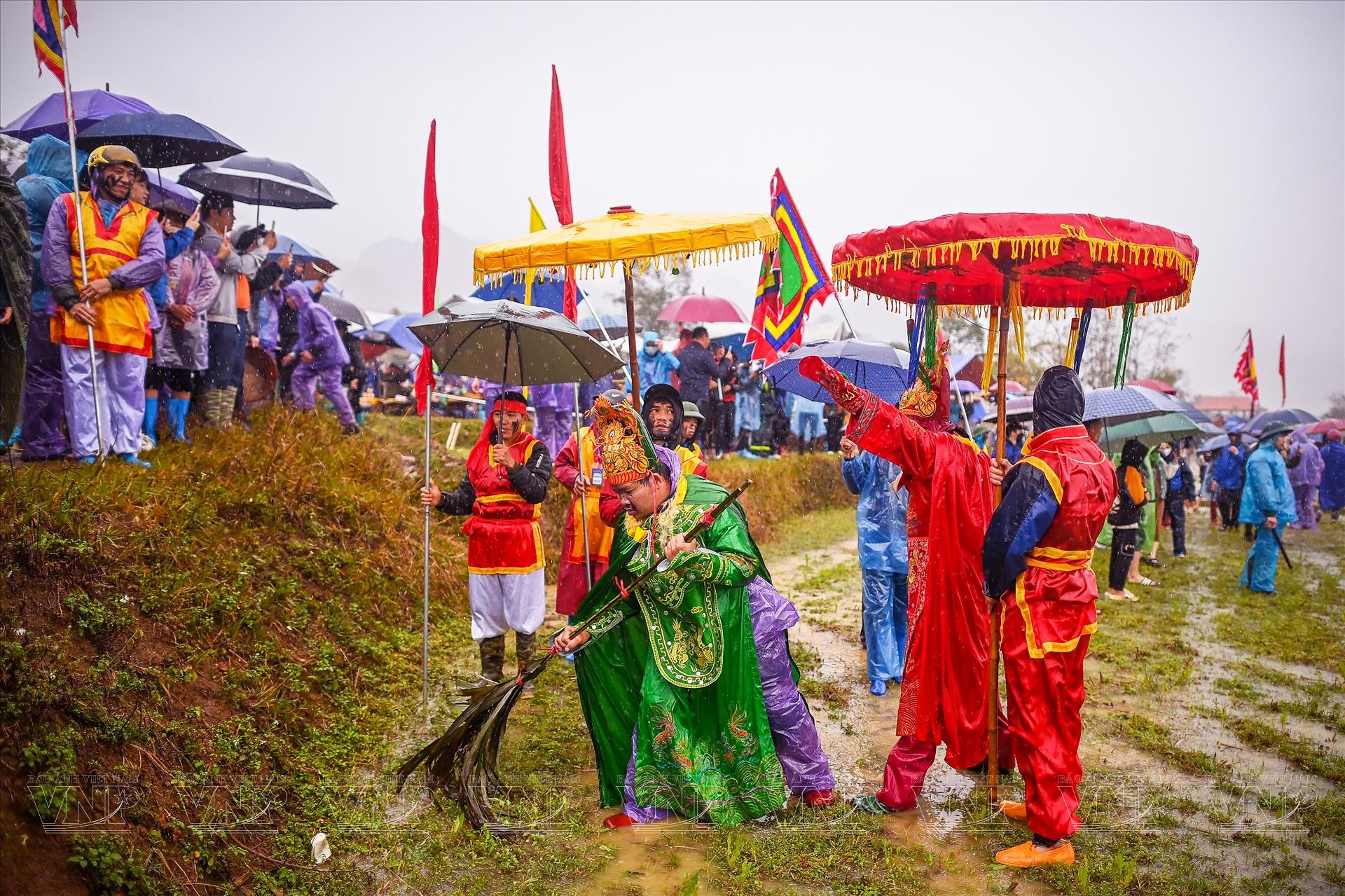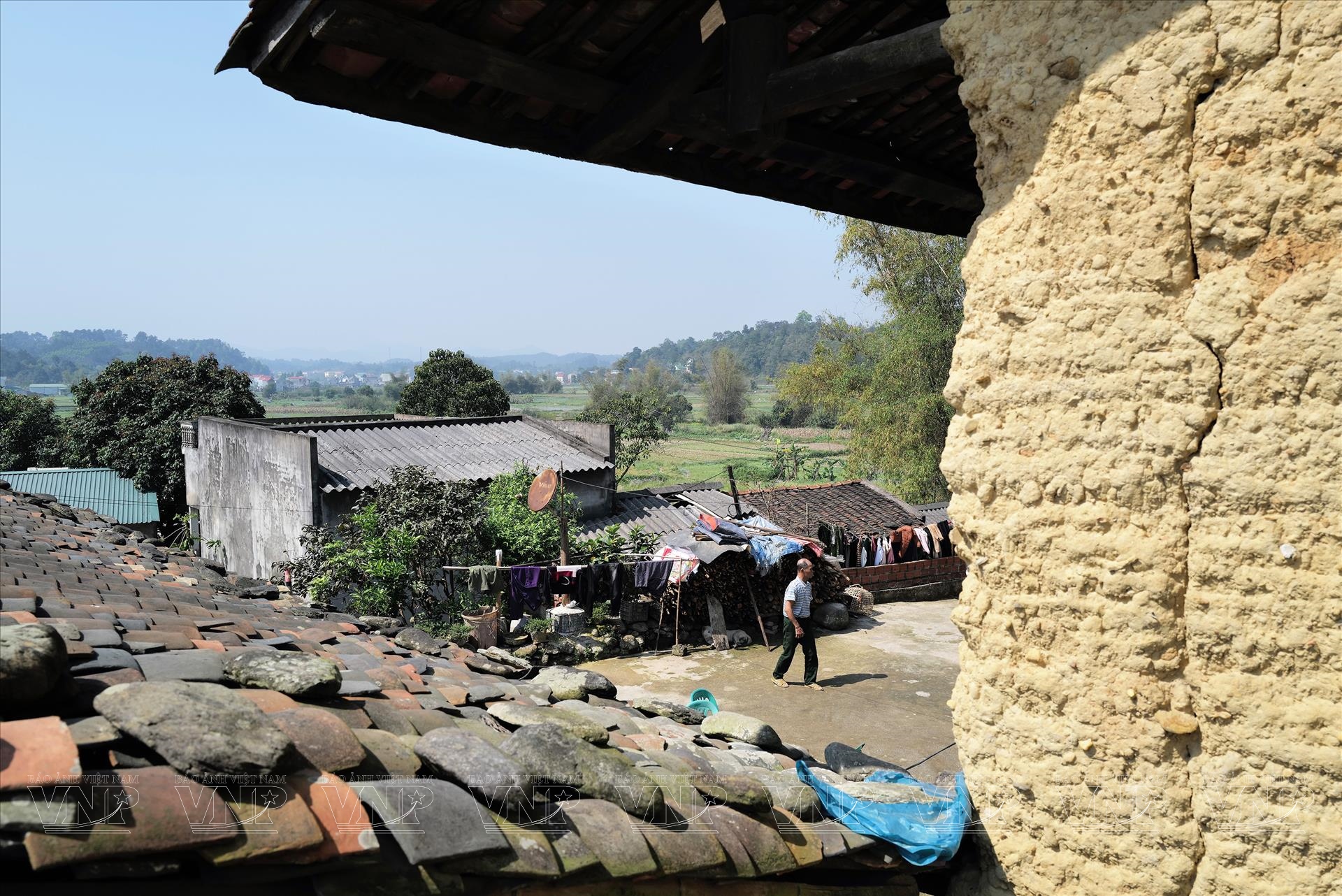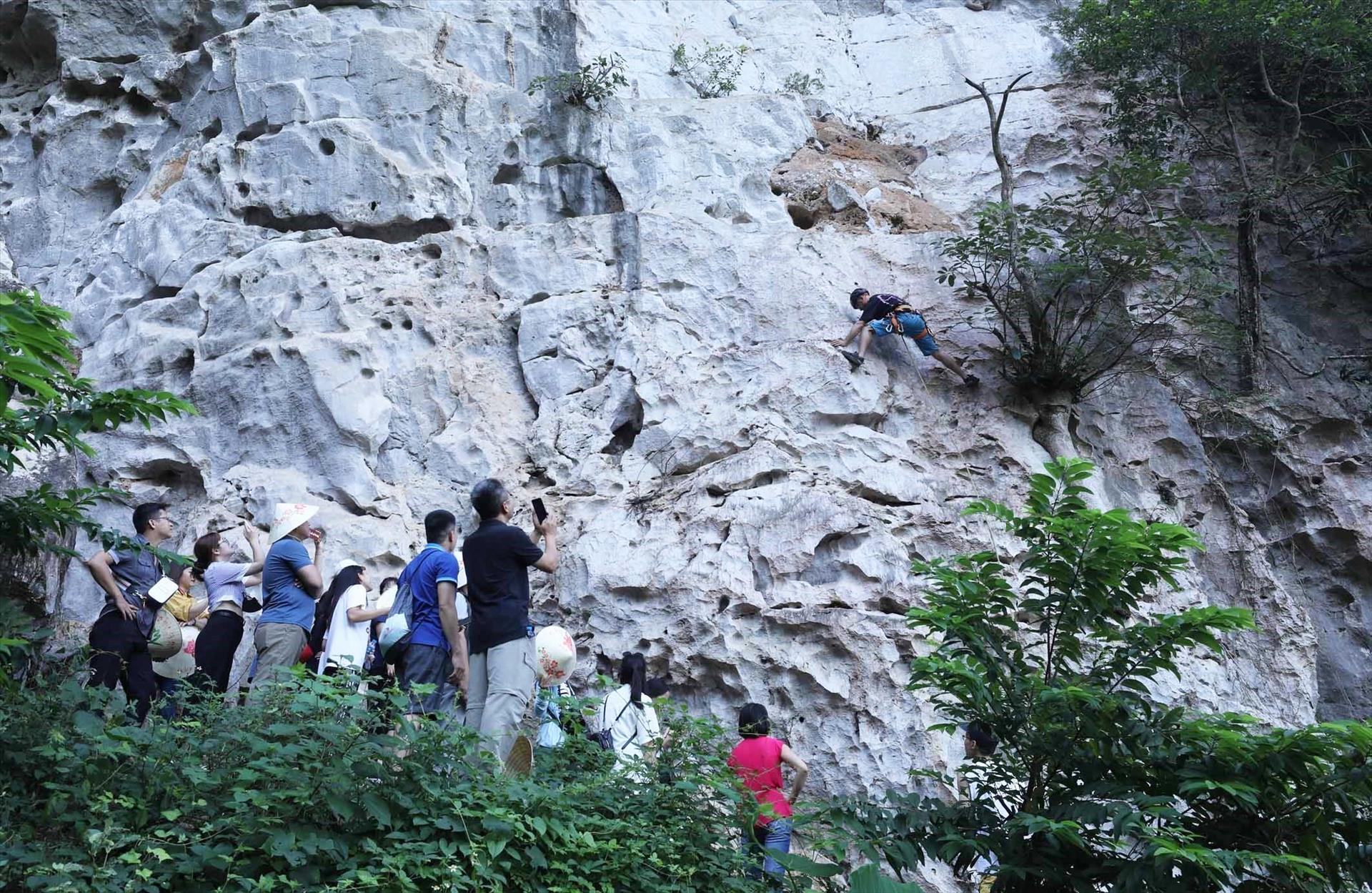The "Treasures" on the Bac Son Arc
Lang Son Geopark, located on the arc of the Bac Son limestone mountains, was established on December 13, 2021 according to Decision No. 2424/QD-UBND of Lang Son Province. By the end of November 2022, the Institute of Archaeology (under the Vietnamese Academy of Social Sciences) in collaboration with the Lang Son Province Museum conducted excavations at Doi (Bat) Cave in Kha Ha Village, Vu Le Commune, Bac Son District and published the news of discovering the remains of a young child buried in a fetal position with knees bent which is part of the Bac Son culture (Neolithic period).
According to Dr. Pham Thanh Son from the Institute of Archaeology, on the same night when the burial of the child was discovered, an elder in the area held up his hand and pointed to the mountains, saying, "The revelation of this special artifact is a good omen for the local people".
Dr. Pham Thanh Son further explained that during the excavation at Bat Cave, they collected over 600 artifacts bearing characteristic traces of the Bac Son culture, such as stone tools, polished axes, hoes, pottery, ceramics, and traces of burial sites. Through the study of these artifacts, Bat Cave is said to belong to the Bac Son culture, dating back 10,000 to 7,000 years. "This becomes even more significant in the context when Lang Son Province is making great efforts to develop a dossier to request UNESCO to recognize the Bac Son limestone mountains and valley as a global geopark," emphasized Dr. Pham Thanh Son.
At the end of 2022, Lang Son Province invited experts from the Vietnam National Commission for UNESCO and the Vietnam Geoparks Network to determine the scope of Lang Son Geopark, which is planned to include the districts of Huu Lung, Bac Son, Binh Gia, Van Quan, and Chi Lang. It covers an area of over 3,840km2 with a population of over 380,000 people (approximately 46.3% of the province's area and 48.1% of its population) and is named "Bac Son Limestone Mountains and Valleys". Therefore, Lang Son Province embarked on building a dossier for the area belonging to the arc of the Bac Son limestone mountains. This is an ancient limestone mountain range, 60km long, 50km wide, with an average height of 400-120m, encompassing the five border districts of Lang Son. "Preliminary survey results show that the five districts of Lang Son have geological characteristics quite different from other regions in Vietnam," commented Dr. Tran Tan Van, former Director of the Institute of Geology and Minerals under the Ministry of Natural Resources and Environment.
Back in 1980, after attending a seminar commemorating the 600th anniversary of Nguyen Trai, a national hero of Dai Viet (Great Viet), French historian and Doctor Charler Faudier visited the Chi Lang Pass and he exclaimed with delight at the sight of the place, saying, "It is the largest open-air historical museum in the world”.
Located on the arc of the Bac Son limestone mountains, the Chi Lang mountain range, covering approximately 20km2 , witnessed hundreds of fierce battles for more than 10 centuries. They include two wars against the Song aggressors (981 and 1077), two wars against the Yuan Dynasty (1285 and 1287), the war against the Ming Dynasty (1427), and the resistance wars against the French and the Americans.
Chi Lang showcases the strategic prowess and military artistry of the ancestors with tactical thinking that maximizes the use of terrain, combined with guerrilla warfare, enemy infiltration, ambushes, raids, and pursuit tactics. The battlefield tactics employed in Chi Lang encompass nearly all the unique military and people's fighting abilities of Vietnam. It is not mention that within those overlapping limestone mountain ranges lay hidden archaeological treasures dating back from 40,000 to 10,000 years, which were later discovered.
Over the years, archaeologists have unearthed prehistoric artifacts such as rudimentary cutting tools and coarse pottery, providing evidence that the land of Chi Lang was inhabited by prehistoric people. Dr. Nguyen Gia Doi, Director of the Institute of Archaeology, stated that numerous prehistoric archaeological sites from different periods have been discovered in Chi Lang District. Notable sites include Bo Nam Cave, Lai Ta Cave, Bang Mac Cave, and Bo Lam Cave (dating back from 10,000 to 8,000 years).
In November 2022, Lang Son Province, in collaboration with Hanoi National University and the FNF (Friedrich Naumann Foundation for Freedom), co-hosted an international workshop on developing public-private partnerships to build the Lang Son Geopark. At this workshop, many scholars and experts affirmed that in terms of geography, geology, history, and archaeological value, the arc of the Bac Son limestone mountains completely meets the strict requirements of UNESCO's Global Geopark.
However, in order to fully promote the cultural values and enable the local residents to make a living on culture and tourism, Lang Son Province needs a long-term strategy. Ass. Prof. Dr. Nguyen Van Hieu from the Hanoi National University believes that this place embodies the unique cultures of various ethnic groups, such as the Tay, Nung, Dao and Hoa with their traditional festivals like Cap Sac, the Na Nhem Festival and the Phai Lua Festival, as well as ancient singing styles like Phong slu and Tay-Nung luon singing and traditional lion and Chau dances, especially Then singing which is considered a “treasure”.
Then singing is a form of folk ritual music that narrates the journey of humans to the celestial realm, seeking blessings and a good life from the Then spirits. Then singing of the Tay and Nung reflects various aspects of life, from daily activities and local stories to love, death rituals, and marriage customs.
Through the study of traditional Then rituals, researchers can clearly observe the worldview, philosophy of life, and cultural identity of the Tay and Nung in the Bac Son region.
Through cultural surveys in Bac Son and Huu Lung districts, the authorities have determined that Then singing, recognized by UNESCO as an intangible cultural heritage in 2019, has been well preserved and promoted by the Tay-Nung (along with the Thai as the owners of this heritage). After five years of UNESCO recognition, the reality has shown that Then singing has become an integral part of the spiritual life of the Tay and Nung living in the Bac Son limestone mountain range, reflecting the relationship between humans and the natural world and the universe. The Then singing heritage is present in 11 provinces in Vietnam, but it is mainly concentrated in the northeastern provinces. Among them, Lang Son province has the largest number of Then artisans, with over 500 individuals.
In Bac Son District alone, since 2019, there have been more than 50 cultural clubs and performing arts teams established to preserve and pass on the Then singing heritage. Along with the scenic tourism of Bac Son Valley, the villages of the Tay and Nung, and the enjoyment of local cuisine, Then singing has become a unique tourism product for visitors to this area.
Compared to UNESCO's criteria for Global Geoparks, the Then singing heritage is a significant asset in the journey of the arc of the Bac Son limestone mountais to be honored in the near future./.
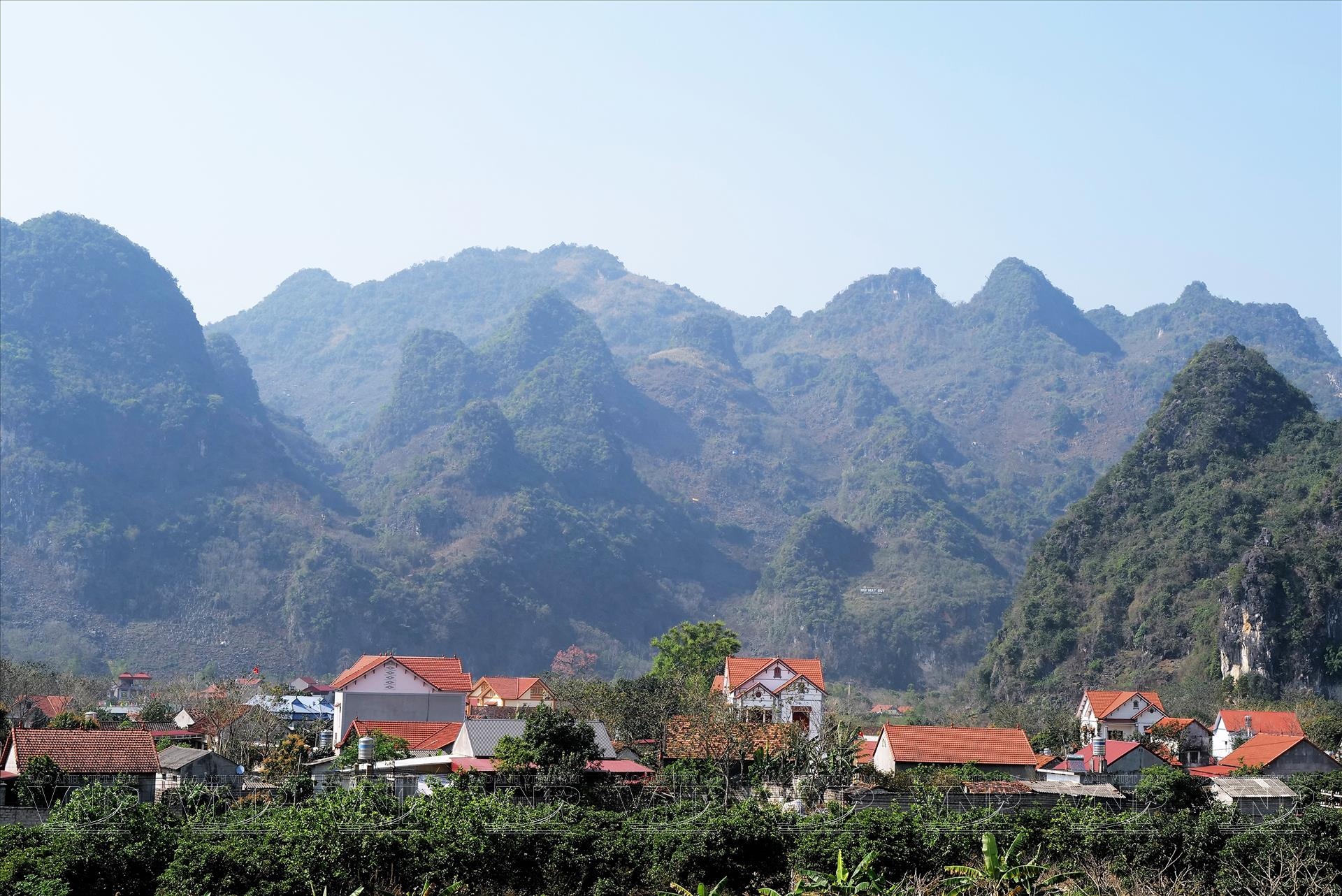 The Ai Chi Lang historical site in Chi Lang district has preserved many heroic historical relics, witnessing the resilient struggle of our people in national defence and construction. Photo: Nguyen Thang/VNP
The Ai Chi Lang historical site in Chi Lang district has preserved many heroic historical relics, witnessing the resilient struggle of our people in national defence and construction. Photo: Nguyen Thang/VNP
Story: Thong Thien
Photos: NguyenThang, Cong Dat, Thong Thien, Tat Son, Truong Tuan Anh, VNA & Files
Translated by Nguyen Tuoi
Designed by Trang Nhung
